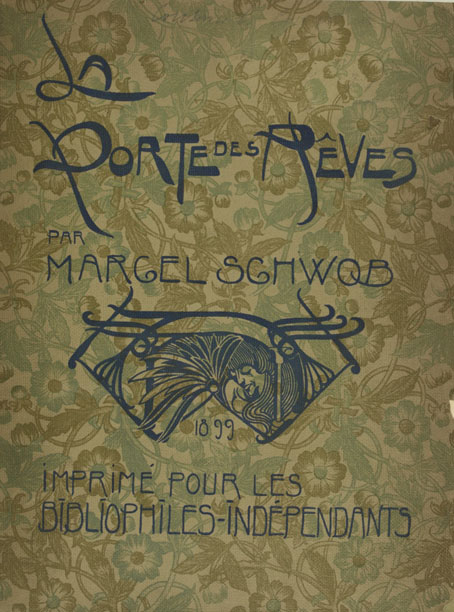
The gate in question, La Porte des Rêves (1899), is a collection of stories by Symbolist writer Marcel Schwob, illustrated in its first edition by Georges de Feure (1868–1943). The collection is actually a kind of “best of Schwob”, being compiled from stories which had already appeared a few years before in other collections. Both Schwob and de Feure were French, and the artist is one of the few whose work may be found in collections of Symbolist art as well as books about Art Nouveau design; you’d think there’d be many more among the conterminous movements but this isn’t the case.
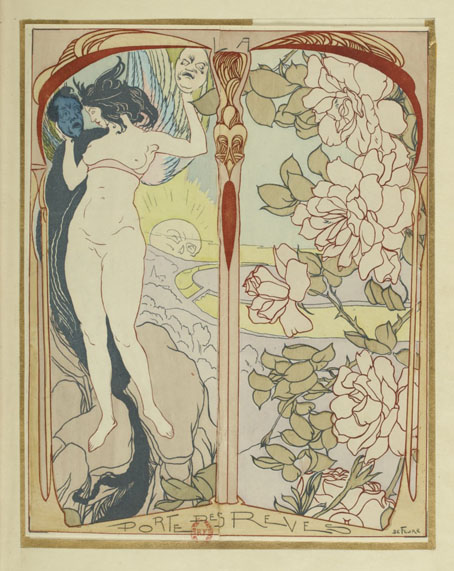
Women are a persistent subject in de Feure’s work, especially the sinister variety who were a staple in fin-de-siècle fiction. Some of these may be found in La Porte des Rêves which features a larger quantity of de Feure’s black-and-white drawing than I’ve seen elsewhere. In a reversal of my usual preferences, I prefer de Feure’s colour work, but anything of his is worth seeing. For a taste of Marcel Schwob’s approach to writing, which included textual collage, see this interview with translator Kit Schluter.
A triple-page spread.
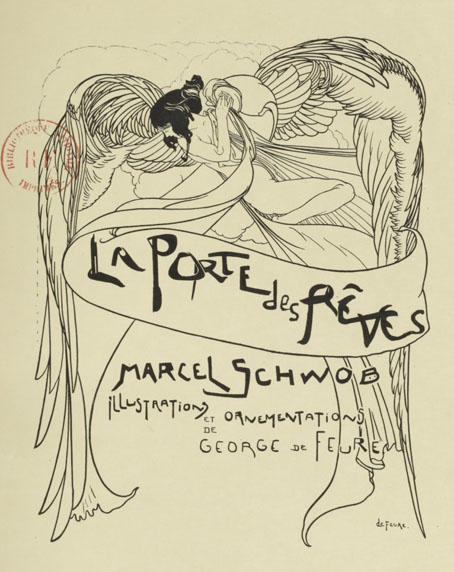
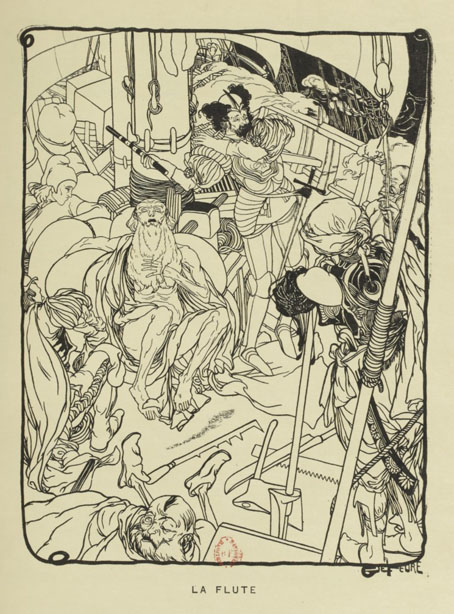
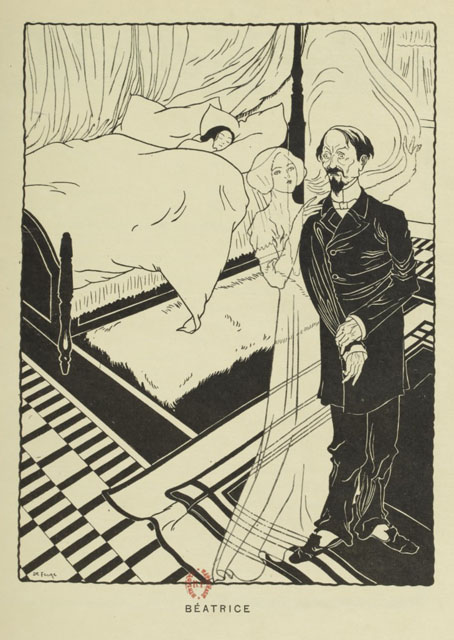
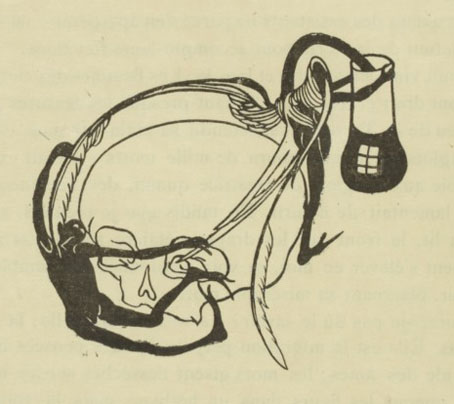
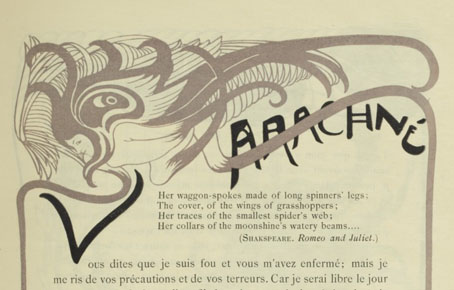
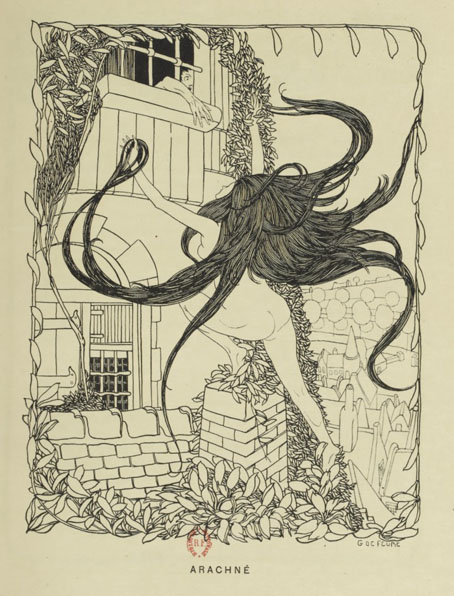
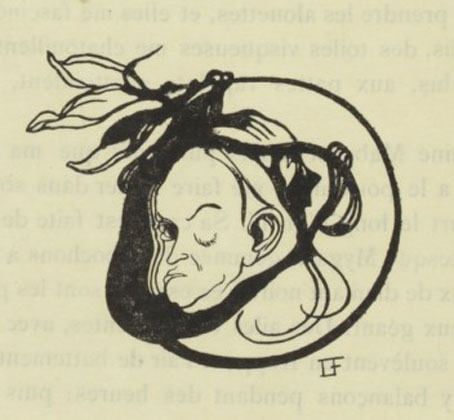
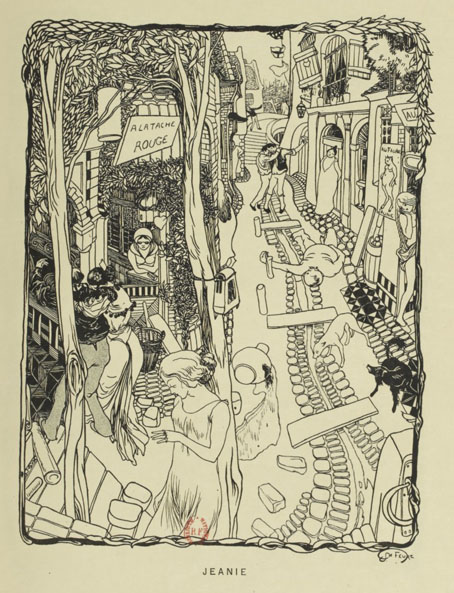
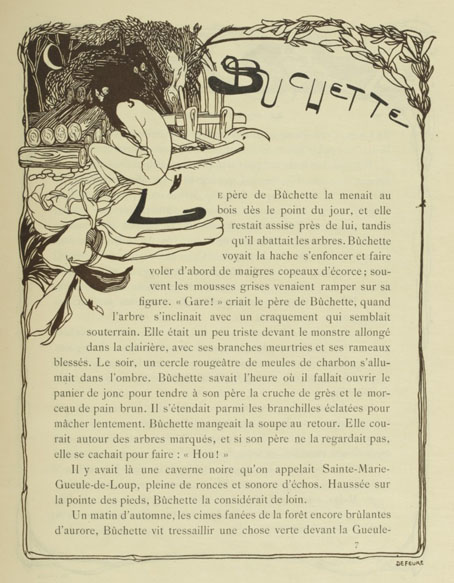
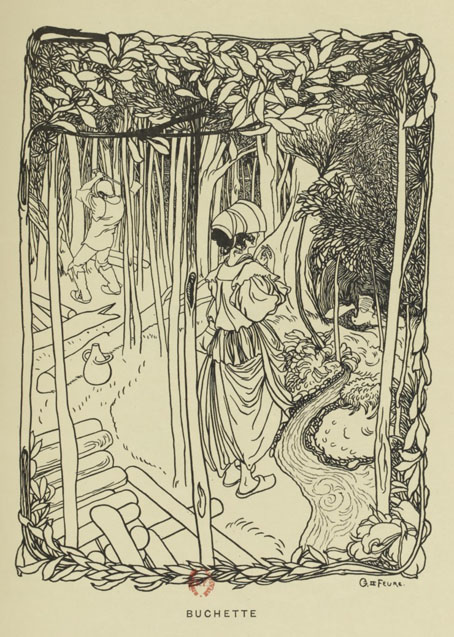
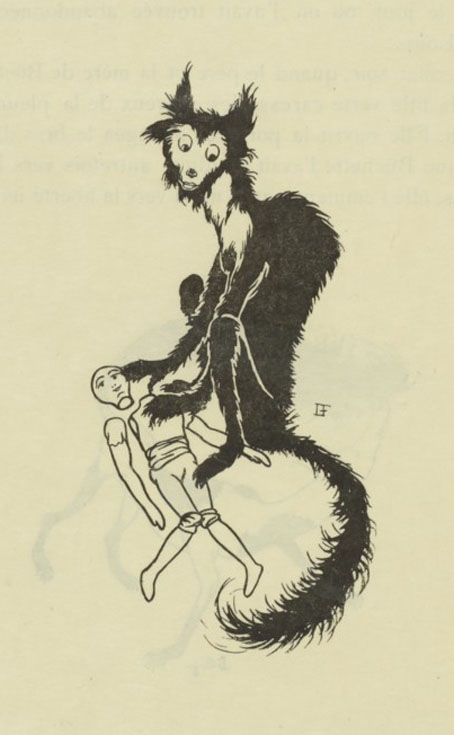
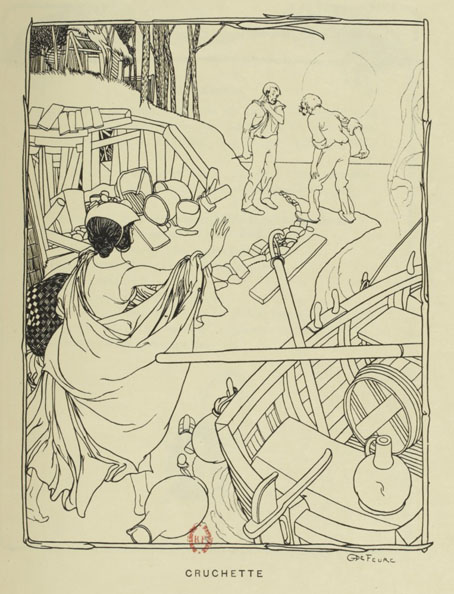
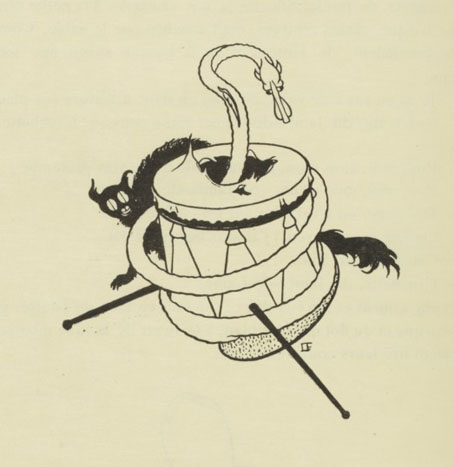
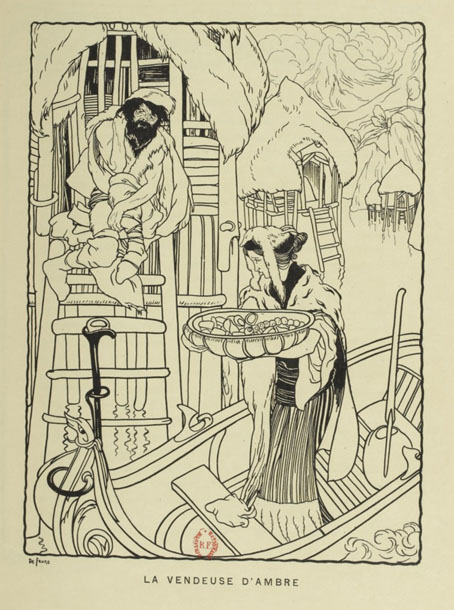
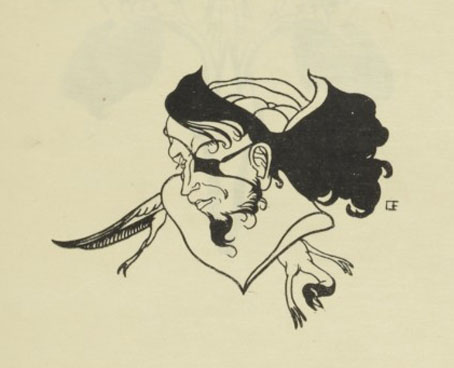
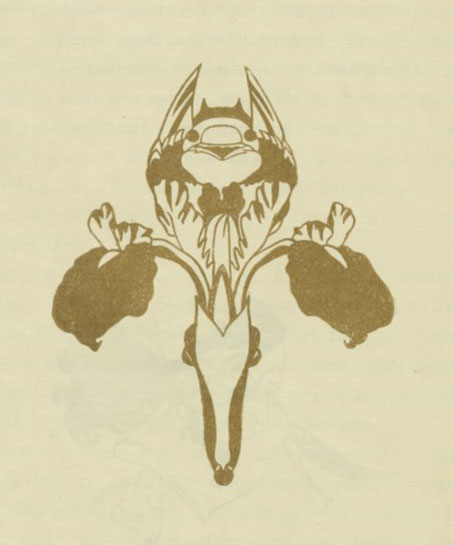
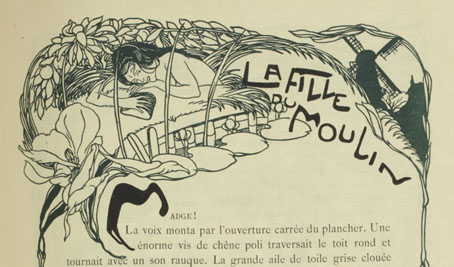


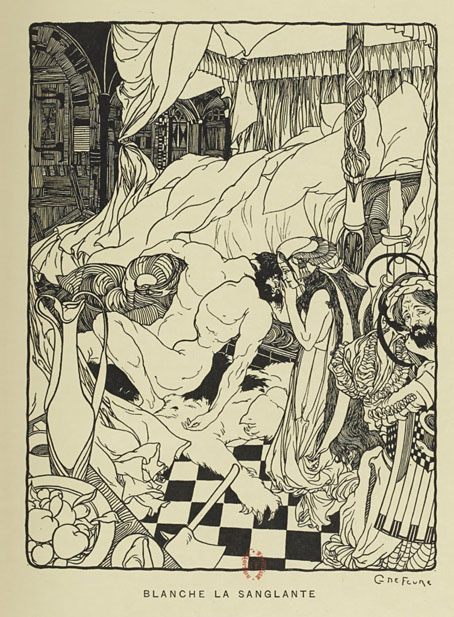
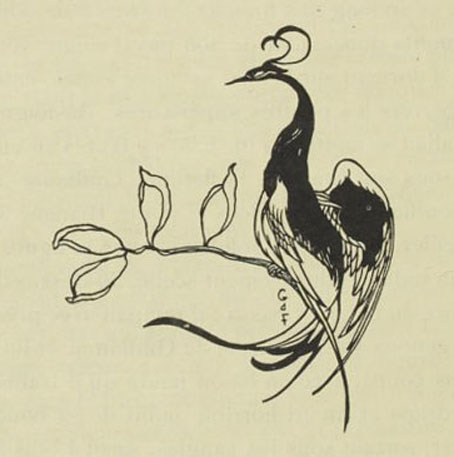
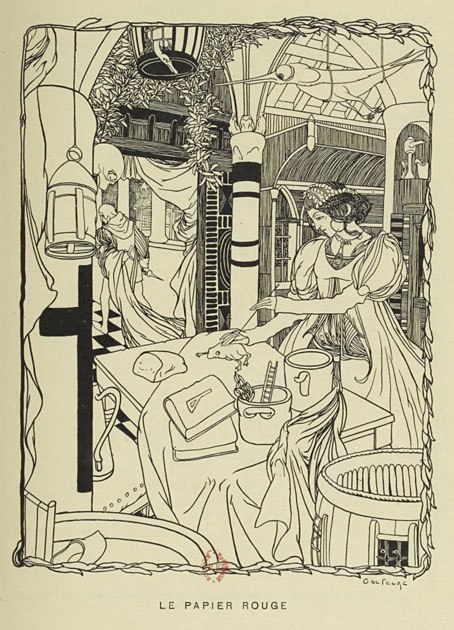
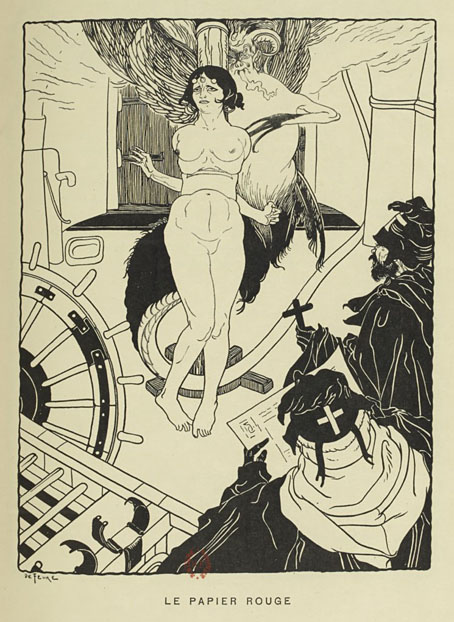
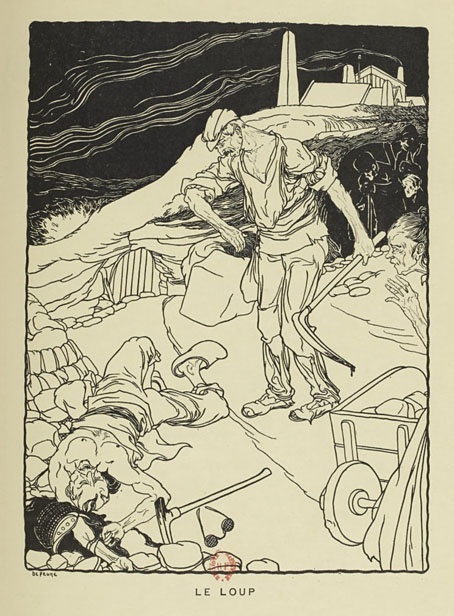
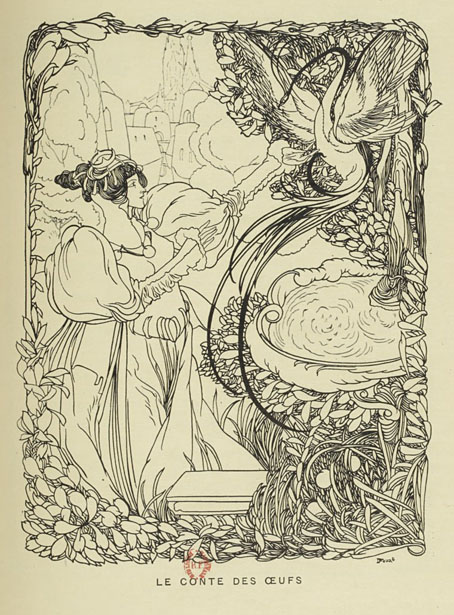
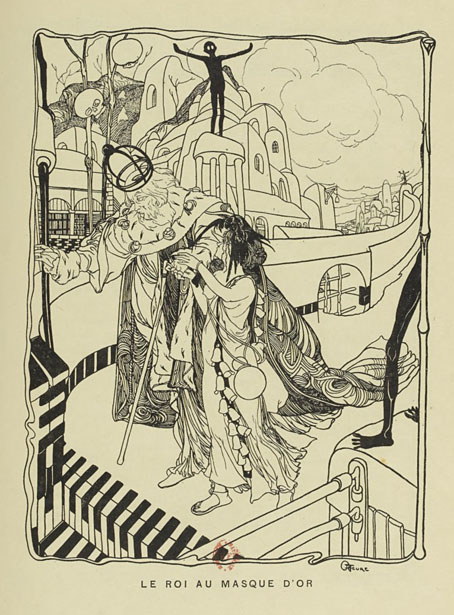
Elsewhere on { feuilleton }
• The illustrators archive
Previously on { feuilleton }
• Les Maîtres de l’Affiche
• L’Image, 1896–1897

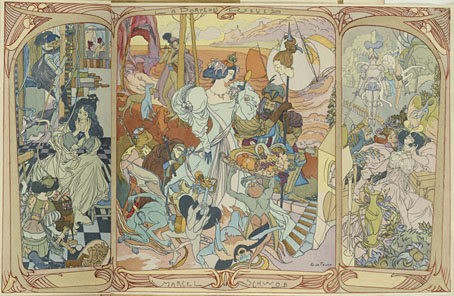
Thanks. Seems that these artists are the precursors of McCay’s Little Nemo and of much of what became comics. Too bad some people just label these artists as ”illustrators.”
PS- This may interest you. Bill Nelson has a new album inspired by 1920s illustrated children books-
https://www.loudersound.com/news/bill-nelson-discusses-the-concept-behind-new-album-starlight-stories
Thanks, I didn’t know about the Bill Nelson. I’m not a great Nelson listener (I have a few of his 80s albums) but I like to know he’s still around and being productive.
The artist/illustrator split didn’t really occur until the 20th century, probably because the idea of illustration as a profession took hold in tandem with developments in print technology and the explosion of magazine publishing. In the 19th century it was common to find artists painting canvases for the salons while also producing illustrations for books without anyone finding this unusual. There’s also the rather basic fact that many artists in the 20th century wouldn’t have been capable of illustrating a book in any kind of conventional manner. The avant garde nature of 20th-century art increased the split by departing from pictorial realism.
Odd to think we are almost at the quarter mark of the 21st century. If I live a normal human lifespan I will have spent most of it in the 20th so it’s natural I suppose for what comes after to seem to me a continuation rather than either decadence or a “new world”. This said just to point out that we seem not to have had a cultural moment in the 1990s comparable to the fin-de-siècle. There was a brief flurry of apocalyptic excitement at the prospect of nines rolling over into zeroes on the calendar characterized here in the US mostly by its stupidity.
Thank you for these fabulous images from a French artist new to me. These are some of the most imaginative and weird illustrations, and they really should be collected somewhere. Appreciate you doing so.
Grim: Thanks. There’ll be more Georges de Feure later.
Stephen: Many people talked about a potential new Decadent age in the 1990s but it always seemed like wishful thinking to me. The 1890s was a unique cultural moment powered by ideas which were also unique for their time: Aestheticism, the first stirrings of feminism in the concept of “the New Woman”, and so on. Those elements weren’t ever going to be repeated. The late 1960s was close in some ways (and obviously revived many Decadent artists and modes) but even that wasn’t the same.
Next year will be the 100th anniversary of Surrealism so I’ll be exploring that labyrinth again. I already have two books lined up on the reading pile.